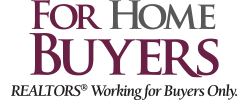Over the past year, there has been a revival of single-family home production. What does this mean for 2014?
Housing will continue its climb toward higher ground this year, but builders are still confronting several challenges, according to economists speaking at the National Association of Home Builders (NAHB) International Builders’ Show (IBS).
NAHB Chief Economist David Crowe explains that consumer confidence has returned to pre-recession levels and household balance sheets are on the mend. Year-over-year household formations are on the rise and now averaging 620,000 compared to just 500,000 during the housing downturn.
At the height of the housing boom, the U.S. was producing 1.4 million additional households each year. Meanwhile, new-home sales are averaging just 8.7 percent of total home sales—barely half the historical average of 16.1 percent. However, builders still face several headwinds, including rising building material prices, persistently tight mortgage credit conditions, difficulties in obtaining accurate appraisals and limited availability in labor and developed lots.
NAHB forecast for 2014:
- 1.15 million total housing starts in 2014, up 24.5 percent from 2013’s 928,000 units.
- Single-family production projected to rise 32 percent to 822,000 units and surge an additional 41 percent to 1.16 million units in 2015.
- 333,000 multifamily starts, up 9 percent from 306,000 in 2013.
- Single-family home sales are projected to hit 584,000 this year, a 35.9 percent increase above last year’s 430,000 sales.
- Residential remodeling activity is expected to register a modest gain this year over 2013.
- A slow and steady housing recovery will bring nationwide housing starts to 71 percent of normal by fourth quarter 2014 and 93 percent of normal by the end of 2015, says Crowe.
- On a state level, the top 20 percent of states will be back to normal production levels by the end of 2015, compared to the bottom 20 percent, which will still be below 84 percent.
Mortgage rates up, but housing still affordable
As the economy strengthens and the Federal Reserve tapers its buy-back of mortgage-backed securities, there will be upward pressure on mortgage rates, but not enough to harm housing affordability, according to Frank Nothaft, vice president and chief economist at Freddie Mac.
Nationally, Nothaft expects that home sales and prices will each rise about 5 percent in 2014, and that housing starts will post a 20 percent gain.
“As we move into the 2014 home buying season, it will be a market dominated by home buying originations rather than refinance originations,” says Nothaft. “This will be the first time since 2000 that purchase originations will dominate the market.”
He says the reason for the change is because so many households looking to refinance have already done so, and as mortgage rates gradually rise, fewer homeowners will look to refinance. Further, purchase originations are expected to increase as the overall housing market strengthens.
Pent-up demand will fuel growth
In the aftermath of the Great Recession, there is a significant pent-up demand to form households and even to build homes.
At least 3 million fewer households formed over the past five years than would normally have been expected. During this period, many college graduates were forced to double-up or move in with their parents. Stronger job growth and a strengthening economy in 2014 should lead to a rise in household formations, which will be important to supplement housing demand.
“I think this will be a pretty good year for home construction,” says Real Estate Expert and Economist David Berson. “There will be a big increase in single-family construction, but not as much for multifamily.”
For more information, visit www.nahb.org.
